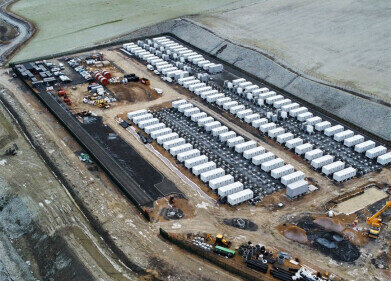Green Energy
How Does Nuclear Fusion Work?
May 07 2015
Most nuclear power plants around the globe currently work via a process called nuclear fission. This involves splitting up large atoms into smaller parts and harvesting the vast amounts of energy which are produced in the process.
However, this practice has been both hugely expensive and wildly controversial, not least for the contribution it has made towards the nuclear arms race and the various nuclear disasters it has caused around the world. It also generates a significant amount of nuclear waste, which is difficult to dispose of.
But what if there was an alternative method of generating similar amounts of energy, without any of the nasty negative consequences? Nuclear fusion offers the same potential benefits of nuclear fission in terms of energy production, but is clean and sustainable (at least for the foreseeable future).
Fusing Instead of Splitting
Whereas nuclear fission works by smashing atoms into smaller parts, nuclear fusion works by smashing them together to create a greater whole. The process of fusing releases significant amounts of heat energy, which can be used to power turbines or generators and converted into electricity.
This phenomenon is most obviously observed in that which sustains all life on Earth – the sun. The sun is powered by hydrogen atoms fusing together to create helium atoms, giving off incredible amounts of heat and light in the process. This provides the sustenance for all forms of life on our planet… but if we were able to harness this power, it could offer the answer to all of our future energy worries, too.
Of course, the surface of the sun is a little different to the surface of the Earth, and as such, recreating the process down here has posed problems for scientists. Up until now, the energy needed to raise temperatures to the required levels to fuse hydrogen atoms has surpassed the net energy gain that the reaction has produced.
Possible Solutions
Scientists have been scratching their heads over a possible solution to this conundrum for many years now. One posited theory is the use of the element helium-3, found in abundance on the moon. Helium-3 is attractive due to the safety and stability of the element. The article Is Space the Answer to Green Energy? investigates in more detail the specific advantages of the theory – as well as the peculiar difficulties in making it a reality.
Meanwhile, scientists at the National Ignition Facility (NIF) in California believe they may have passed a milestone in nuclear fusion development. Last November, the team at NIF successfully used the strongest laser known to man to fuse hydrogen atoms, and although the energy yield still did not outweigh that which was expended upon the process, the team believe this was more due to inefficiencies in the technique, rather than the technique itself. It is hoped that once these inefficiencies are ironed out, nuclear fusion will be one step closer to reality.
Events
Apr 22 2024 Hannover, Germany
Apr 23 2024 Kuala Lumpur, Malaysia
Apr 24 2024 Sao Paulo, Brasil
May 05 2024 Seville, Spain
May 13 2024 Munich, Germany














